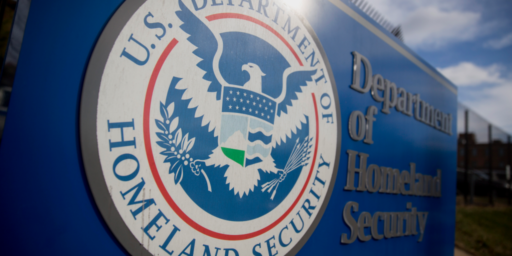Super Bowl 44 Most Watched Show Ever, Topples M*A*S*H Finale
 Last night’s Super Bowl has apparently broken a record many thought would stand forever, ousting the last episode of M*A*S*H as the most-watched show in the history of American television.
Last night’s Super Bowl has apparently broken a record many thought would stand forever, ousting the last episode of M*A*S*H as the most-watched show in the history of American television.
The New Orleans Saints’ victory over Indianapolis in the Super Bowl was watched by more than 106 million people, surpassing the 1983 finale of “M-A-S-H” to become the most-watched program in U.S. television history, the Nielsen Co. said Monday.
Compelling story lines involving the city of New Orleans and its ongoing recovery from Hurricane Katrina and the attempt at a second Super Bowl ring for Indianapolis quarterback Peyton Manning propelled the viewership. Football ratings have been strong all season. “It was one of those magical moments that you don’t often see in sports,” said Sean McManus, president of CBS News and Sports.
Nielsen estimated Monday that 106.5 million people watched Sunday’s Super Bowl. The “M-A-S-H” record was 105.97 million. The viewership estimate obliterated the previous record viewership for a Super Bowl — last year’s game between Arizona and Pittsburgh. That game was seen by 98.7 million people, Nielsen said.
The “M-A-S-H” record has proven as durable and meaningful in television as Babe Ruth’s record of 714 home runs was in baseball until topped by Hank Aaron. Ultimately, it may be hard to tell which program was really watched by more people. There’s a margin for error in such numbers, and Nielsen’s Monday estimate was preliminary, and could change with a more thorough look at data due Tuesday.
“It’s significant for all of the members of the broadcasting community,” said Leslie Moonves, CBS Corp. CEO. “For anyone who wants to write that broadcasting is dead, 106 million people watched this program. You can’t find that anywhere else.”
Moonves predicted CBS will earn more in advertising revenue than in any other Super Bowl. The good ratings for the game and football in general also set CBS and other football broadcasters up well when selling advertising for next season, he said.
The Nielsen estimate also drew some congratulations from Alan Alda, the star of “M-A-S-H,” and the slugger whose record was beaten. “If the `M-A-S-H’ audience was eclipsed, it was probably due in large part to the fact that the whole country is rooting for New Orleans to triumph in every way possible,” Alda said. “I am, too, and I couldn’t be happier for them. I love that city.”
There are more American homes with television sets now (114.9 million) than there were in 1983 (83.3 million). An estimated 77 percent of homes with TVs on were watching “M-A-S-H” in 1983, compared with the audience share of 68 for the Super Bowl. Nielsen also measures only the United States, and it’s possible some World Cup soccer games were seen more worldwide. Accurate measurement of television audiences outside the United States is spotty at best.
Alda also wondered whether the numbers were too close to declare a new champion. He thinks Nielsen didn’t take into account large numbers of people watching “M-A-S-H” communally, which is often the case for football games, too. “Not to say I’m competitive, but in part we are talking about sports,” he said. “And I actually AM competitive.”
McManus didn’t want to jinx it, but the abnormally strong viewership for football this year left him hoping for a record. The NFC and AFC championship games both had their biggest audiences since the 1980s. The growth of high-definition television and its appeal to sports fans has also helped.
A competitive game until the final minutes sealed it. McManus acknowledged some nervousness when Indianapolis jumped out to a 10-0 lead — a Super Bowl rout often makes people turn away from the game — but New Orleans roared back.
The Mid-Atlantic blizzard also helped CBS. After New Orleans, the highest-rated market was snowbound Washington, Nielsen said. More people watched the game from their homes in that area instead of going to parties or bars, and Nielsen does a much better job counting viewers in homes than outside of them. “Bad weather in the Northeast and good weather in Florida was a good combination for us,” McManus said.
It was, quite literally, a perfect storm.
McManus hinted at the reason no one thought the M*A*S*H record would fall, despite a growing number of people available to watch television: Market segmentation. In 1983, most of us had just the three broadcast networks (CBS, NBC, and ABC — Fox didn’t yet exist) plus perhaps a local PBS station and a couple of crappy UHF stations showing “Leave it to Beaver” and “Ultra Man” reruns. Current cable stalwarts HBO and ESPN were fledgling and most people either couldn’t get cable or couldn’t figure out why anyone would pay for TV when all the shows you could possibly want were being shown free.
Of course, the Super Bowl is different. It’s the one show that virtually everyone still watches. It’s broadcast on Sundays, when most everyone is home, and nobody’s foolish enough to program expensive original content against it. ( I don’t recall what was against the final episode of M*A*S*H, but there were almost certainly two legitimate shows on the other networks.) As a result, the 44 Super Bowls completely dominate the lists of most-watched shows. If anything was going to topple “Goodbye, Farewell, and Amen” it was going to be a Super Bowl.






I hate to see the politicizing of the Superbowl. As soon as someone mentions Katrina the next sentence is about Bush. Should be about a city surrounded and below the levels of the Mississippi River, Lake Pontchartain, and the Gulf of Mexico and some poorly built levies. Super Bowl 44 was in Florida and a team from New Orleans beat a team from Indianapolis, soundly. The Colts had to defeat the Ravens and the Jets to go to Miami. The Saints had to defeat the Cardinals, lead by a future hall of fame QB and the Vikings, lead by a future hall of fame QB. If they spend on dime rebuilding a city that must bury its dead above ground because of the water table, the next time it floods, blame Bush.
How do the calculations work in these cases? Are they estimating amount of households tuned into the program, through a large sample like Nielsen does (or at least that’s how I think the Nielsen ratings work). Or are they estimating total people watching? Because, of course, many, many, many televisions had 10, 20+ people watching at once.
The former. And, as Alda notes, the same was true of M*A*S*H’s final episode, which was certainly event viewing. In any case, they’re just SWAGs at a real number.
I wonder if increasing viewer ship had anything to do with accepting the Tebow advertisement.
I took my son swimming at the neighborhood pool. It wasn’t as crowded as usual. Who won?